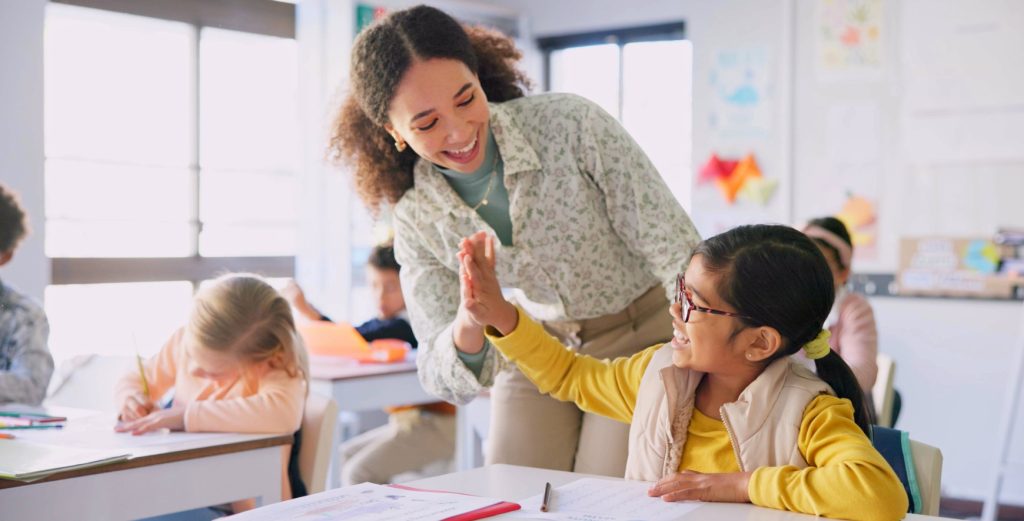Introduction:

In today's educational landscape, recognizing and embracing neurodiversity is vital for fostering an inclusive and nurturing environment for all learners. Neurodivergent individuals, including those with Autism Spectrum Disorder (ASD), Attention Deficit Hyperactivity Disorder (ADHD), Dyslexia, and other neurological differences, possess unique cognitive strengths and challenges. By implementing appropriate accommodations and strategies, educators can unlock the full potential of these students, enabling them to thrive academically, socially, and emotionally.
Understanding Neurodiversity
Neurodiversity acknowledges that neurological variations are a natural part of human diversity, and that these differences should be respected and celebrated, rather than viewed as deficits or disorders. This paradigm shift emphasizes the importance of creating environments that support and empower neurodivergent individuals, allowing them to leverage their strengths while mitigating potential challenges.
The Importance of Accommodations
Accommodations are adjustments or modifications made to the learning environment, instructional methods, or assessment tools to ensure that neurodivergent students have equal access to educational opportunities. These accommodations support neurodivergent learners in demonstrating their knowledge and abilities, building on their strengths rather than focusing on remediating their challenges.
The following accommodations are examples of easy to implement tools in school environments:
Noise Management Strategies
For many neurodivergent individuals, excessive noise can be a significant barrier to concentration and focus. Providing noise-canceling headphones or designated quiet workspaces can help minimize distractions and create an environment conducive to learning. These accommodations allow students to engage with the material more effectively, enhancing their ability to absorb and retain information. Designated quiet workspaces, such as resource rooms or designated areas within the classroom, can offer an additional area of choice for students to work undisturbed. These spaces can be designed with sound-absorbing materials and minimal visual stimuli, creating a calming atmosphere that supports focused learning.
Flexible Scheduling and Remote Learning Options
Recognizing that neurodivergent individuals may have different energy patterns and learning styles, offering flexible scheduling or remote learning options can be highly beneficial. This flexibility allows learners to engage with the material when they are most alert and receptive, improving their ability to absorb and retain information. In some cases, neurodivergent students may benefit from flexible attendance options, such as the ability to attend classes remotely or take breaks as needed. This accommodation can help alleviate sensory overload or address specific challenges related to their neurological differences, while ensuring that students are learning and meeting academic requirements.
Sensory Accommodations
Sensory processing differences are common among neurodivergent individuals, particularly those on the autism spectrum. Providing sensory accommodations can significantly improve their learning experience and overall well-being.
Seating Arrangements

Thoughtful seating arrangements can help minimize sensory overload and create a comfortable learning environment. This may involve positioning neurodivergent students away from potential sensory triggers, such as bright lights or high-traffic areas, or allowing them to use alternative seating options like standing desks or wiggle cushions.
Fidget Tools
Fidget tools, such as stress balls, fidget spinners, or other tactile objects, can help neurodivergent students stay focused and engaged during instructional periods. These tools provide a constructive outlet for excess energy or sensory input, allowing the student to better attend to the task at hand.
Lighting Adjustments
Some neurodivergent individuals may be sensitive to certain types of lighting, such as fluorescent bulbs or bright overhead lights. Adjusting the lighting in the classroom or providing alternative lighting options, like lamps or natural light sources, can create a more comfortable and supportive environment.
Behavioral and Environmental Supports
Neurodivergent students may exhibit unique behavioral patterns or challenges related to their neurological differences. Implementing appropriate behavioral and environmental supports can help manage these challenges and promote a positive learning experience.
Clear Expectations and Positive Reinforcement
Establishing clear expectations and providing timely, positive reinforcement can guide behavior in a supportive manner. Visual aids, such as schedules or behavior charts, can help neurodivergent students understand and adhere to classroom routines and expectations.
Designated Break Areas
Providing designated break areas or sensory rooms can offer students a space to decompress and self-regulate when feeling overwhelmed or overstimulated. These spaces should be designed with calming elements, such as soft lighting, comfortable seating, and sensory tools.
Sensory Diets
Sensory diets are personalized plans that incorporate specific sensory activities or strategies to help neurodivergent students maintain an optimal level of alertness and focus. These diets may include activities such as deep pressure, vestibular input, or proprioceptive input, tailored to the individual's unique sensory needs.

Personalized Learning Strategies
Every learner has a unique set of strengths, challenges, and learning preferences. By tailoring teaching methods and strategies to leverage these individual differences, educators can create a more inclusive and effective learning environment.
Multisensory Instruction
Incorporating multisensory instructional techniques can engage neurodivergent learners on multiple levels, catering to various learning styles and preferences. This may involve using visual aids, tactile manipulatives, auditory cues, or kinesthetic activities to reinforce concepts and enhance understanding.
Strength-Based Approaches
Identifying and building upon neurodivergent students' strengths can foster a sense of confidence and motivation. For example, if a student excels in visual processing, incorporating more visual aids or graphic organizers into their learning experience can help them engage more effectively with the material.
Differentiated Instruction
Differentiated instruction involves adapting the content, process, products, or learning environment to meet the diverse needs of individual learners. For neurodivergent students, this may involve modifying the complexity of assignments, providing alternative means of demonstrating understanding, or adjusting the pace of instruction.
Professional Support
Collaborating with professionals, such as school counselors, therapists, or educational psychologists, can provide valuable support and guidance for neurodivergent students and their families. Educators should encourage the use of respectful and inclusive language, placing a schoolwide emphasis on teaching students how to talk about differences without judgment or stereotypes.
Counseling and Therapy

School counselors and therapists can offer emotional support, coping strategies, and guidance for managing challenges related to neurodivergence. They can also provide valuable insights and recommendations for accommodations and interventions tailored to the individual student's needs.
Educational Assessments
Educational psychologists can conduct comprehensive assessments to identify neurodivergent students' strengths, challenges, and learning needs. These assessments can inform the development of personalized educational plans and accommodations, ensuring that students receive the support they require to succeed academically.
Building a Supportive Community
Creating a supportive and inclusive community for neurodivergent students involves collaboration among educators, families, and professionals.
Educator Training and Professional Development
Providing ongoing training and professional development opportunities for educators can equip them with the knowledge and skills necessary to effectively support neurodivergent learners. This may include training on neurodiversity, inclusive teaching practices, and specific accommodations and strategies. Educators should provide age-appropriate education about what neurodiversity means, highlighting the overarching concept that everyone has unique strengths and challenges and using examples of how different perspectives and skills can contribute positively to a group.
Parent and Family Involvement
Actively involving parents and families in the educational process can foster a collaborative approach to supporting neurodivergent students. Regular communication, shared decision-making, and the exchange of insights and strategies can help create a cohesive and supportive environment for the student.
Peer Support and Mentorship
Establishing peer support networks or mentorship programs can provide neurodivergent students with a sense of belonging and community. Connecting with others who share similar experiences can offer valuable social and emotional support, as well as opportunities for mutual understanding and growth.
Conclusion
Embracing neurodiversity and implementing appropriate accommodations is essential for creating an inclusive and supportive learning environment for neurodivergent students. By addressing all learners’ unique needs, educators can empower students to reach their full potential. With the right accommodations and a nurturing environment, all learners can thrive academically, socially, and emotionally, while feeling supported and valued in their schools.




